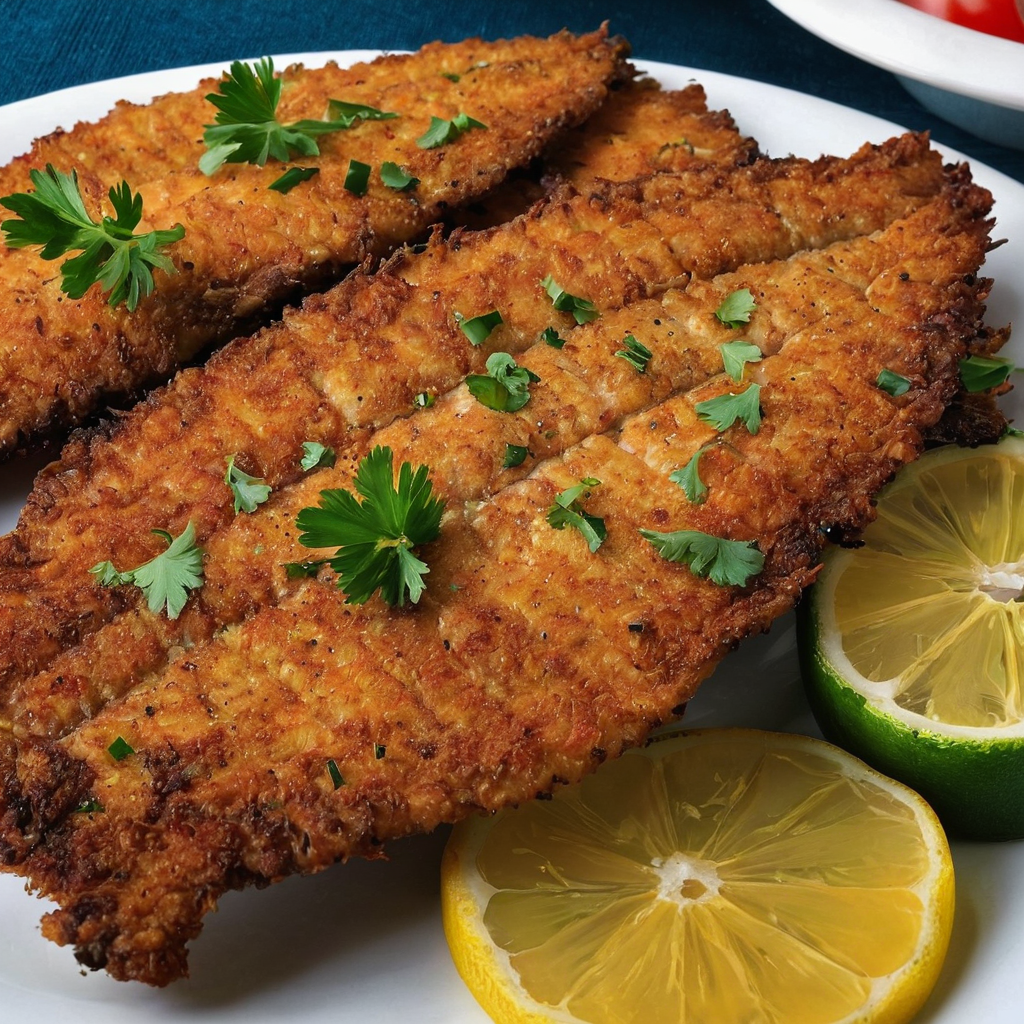A Delicious and Easy-to-Make Seafood Dish
If you’re looking for a delicious and satisfying meal, fried fish is a great option. With its crispy exterior and juicy, flaky interior, it’s no wonder that fried fish is a popular dish around the world. Whether you prefer your fish breaded and deep-fried or pan-fried with a light coating of flour, there are plenty of ways to enjoy this classic dish.
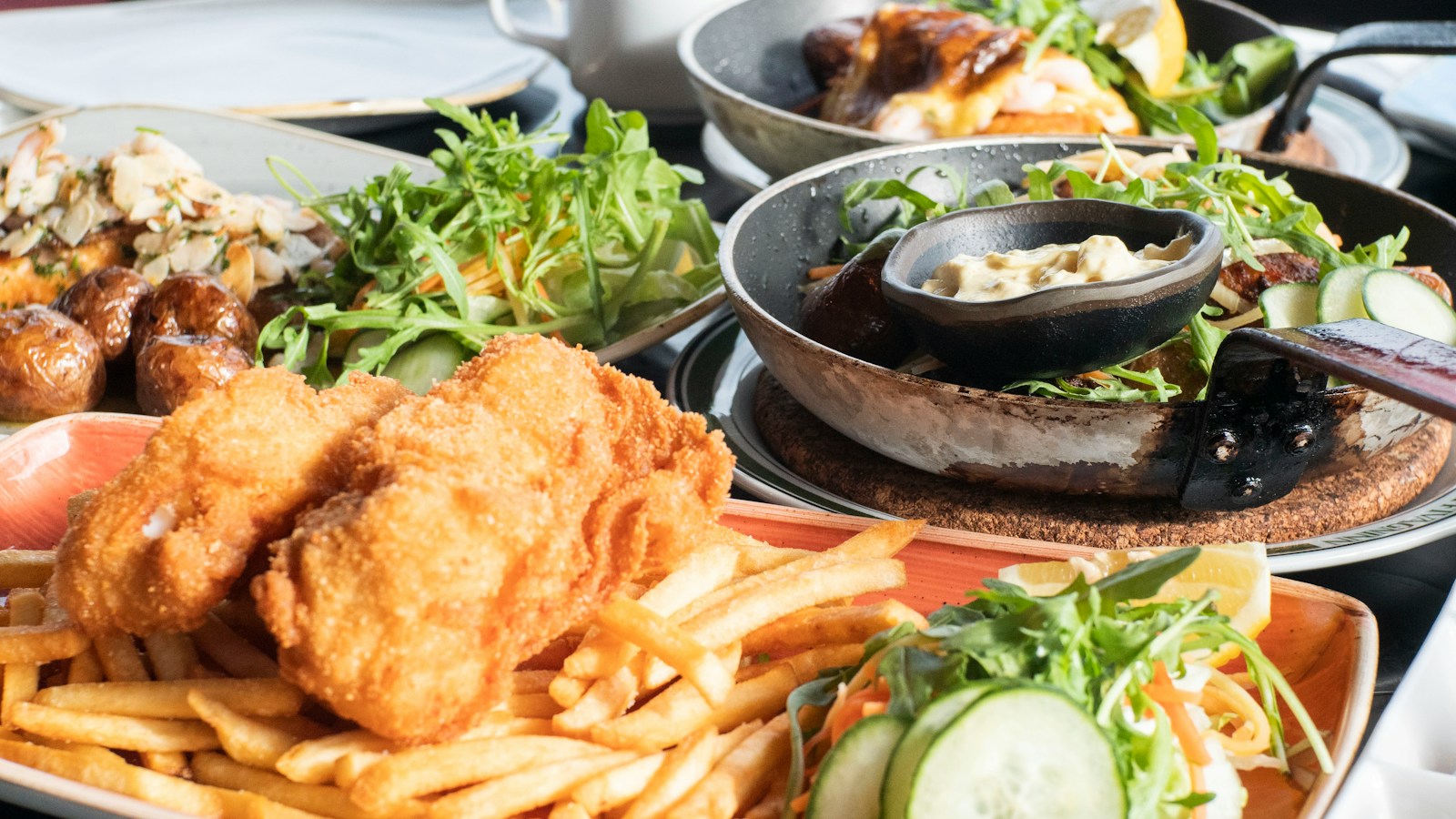
One of the best things about fried fish is its versatility. You can use a variety of fish types, from cod and haddock to tilapia and catfish, to create a dish that suits your tastes. Plus, there are many different batters and coatings you can use to add flavor and texture to your fish. From beer batter to panko breadcrumbs, the possibilities are endless when it comes to frying fish.
To make the most of your fried fish, it’s important to use the right technique. Whether you’re deep-frying or pan-frying, it’s important to use a hot oil and to cook the fish until it’s crispy and golden brown. With a few simple tips and tricks, you can create a delicious fried fish dish that’s sure to impress. So why not give it a try and see for yourself why fried fish is such a beloved dish?
History of Fried Fish
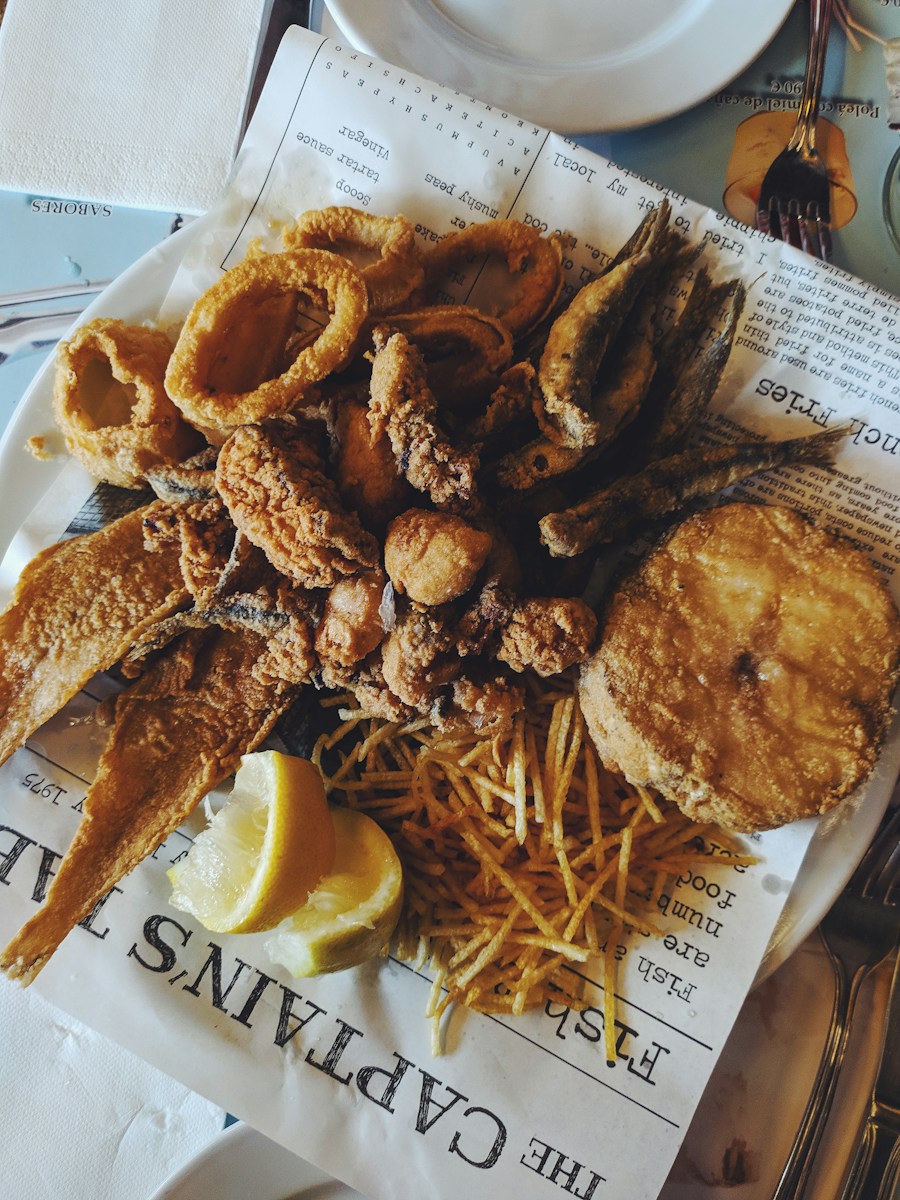
Fried fish has a long and storied history that spans across cultures and continents. The practice of frying fish can be traced back to ancient times, with evidence of fried fish dishes appearing in both Egyptian and Roman cuisine. However, it wasn’t until the 19th century that fried fish became a popular dish in England, thanks in part to the rise of the fishing industry in coastal towns.
Cultural Significance
In many cultures, fried fish has a special significance. For example, in the United States, fried fish is often associated with the South and is a staple dish during Lent. In England, it is often served alongside chips (fries) and is a popular takeaway food. In Japan, tempura, a type of fried fish, is a popular dish that is often served as a snack or appetizer.
Global Variations
Fried fish is a versatile dish that can be prepared in a variety of ways. In the United States, catfish is a popular choice for frying, while in Japan, mackerel and shrimp are often used. In India, fish is often coated in a spicy batter and deep-fried, while in China, fish is often served whole and fried until crisp.
Regardless of how it is prepared, fried fish remains a beloved dish around the world. Whether you enjoy it as a snack, a main course, or a takeaway food, there’s no denying the appeal of this classic dish.
Selecting the Right Fish
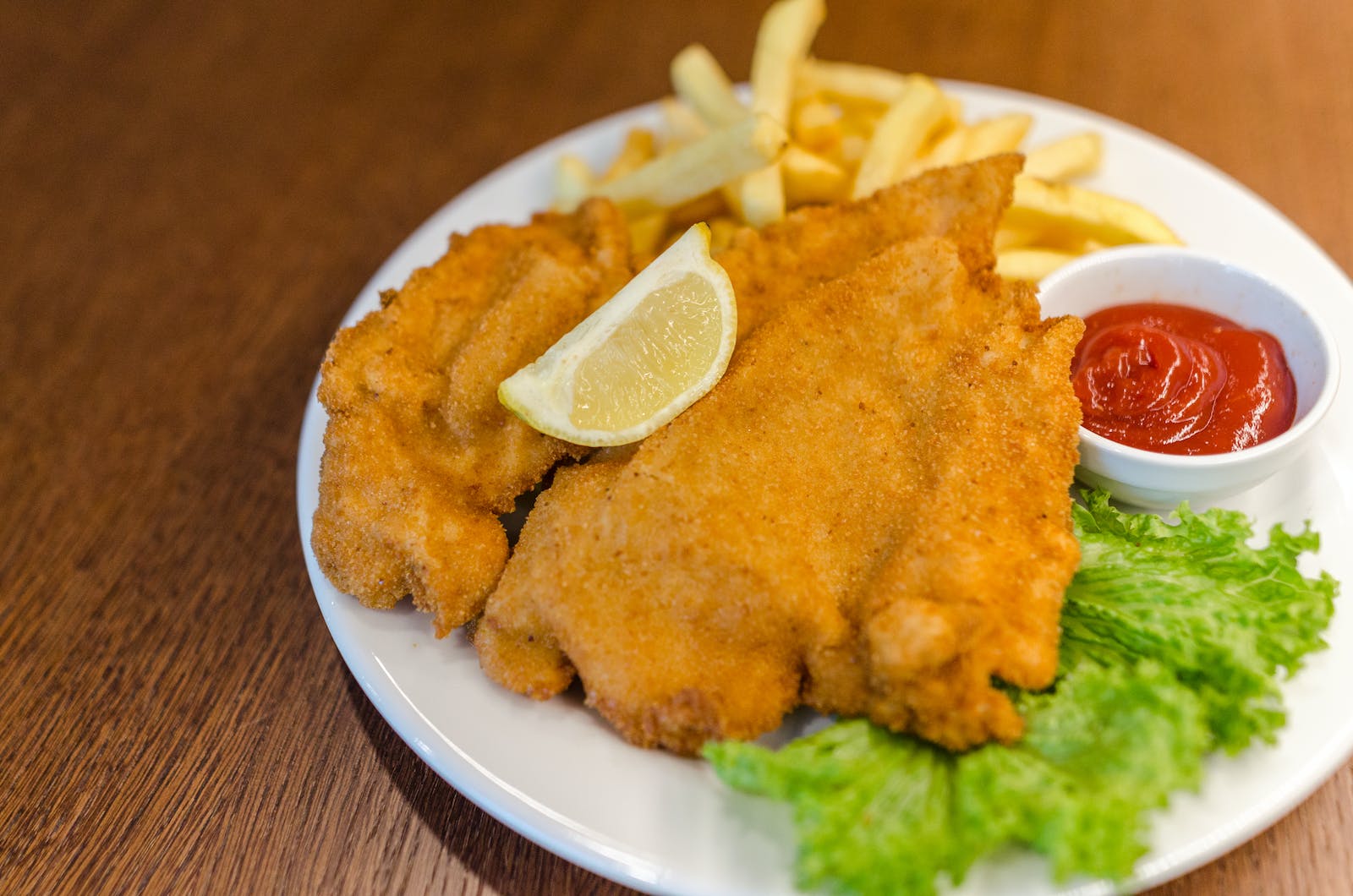
If you want to make the perfect Southern fried fish, choosing the right fish is crucial. In this section, we will discuss the key factors to consider when selecting your fish.
Freshness Factors
When selecting fish, freshness is key. Look for fish that has clear eyes, shiny skin, and bright red gills. If the eyes are cloudy, the skin is dull, or the gills are brownish, the fish is not fresh. You can also check the smell of the fish. Fresh fish should have a mild, ocean-like smell. If the fish smells overly fishy or sour, it’s not fresh.
Best Fish Types for Frying
Not all fish are created equal when it comes to frying. Some fish are too delicate and will fall apart during the frying process, while others are too oily and will become greasy. Here are some of the best fish types for frying:
- Catfish: This is a popular choice for Southern-style fried fish. It has a firm texture and mild flavor that holds up well during frying.
- Tilapia: This is another great option for frying. It has a mild flavor and a firm, flaky texture.
- Cod: This is a classic fish for fish and chips. It has a mild flavor and a firm texture that holds up well during frying.
- Haddock: This is another great option for fish and chips. It has a slightly sweet flavor and a firm texture that holds up well during frying.
- Trout: This is a good option if you want a fish with a slightly stronger flavor. It has a delicate texture that can be a bit tricky to fry, but it’s worth the effort.
In conclusion, when selecting fish for frying, look for fresh fish with clear eyes, shiny skin, and bright red gills. Choose fish that has a firm texture and mild flavor, such as catfish, tilapia, cod, haddock, or trout.
Ingredients and Substitutions
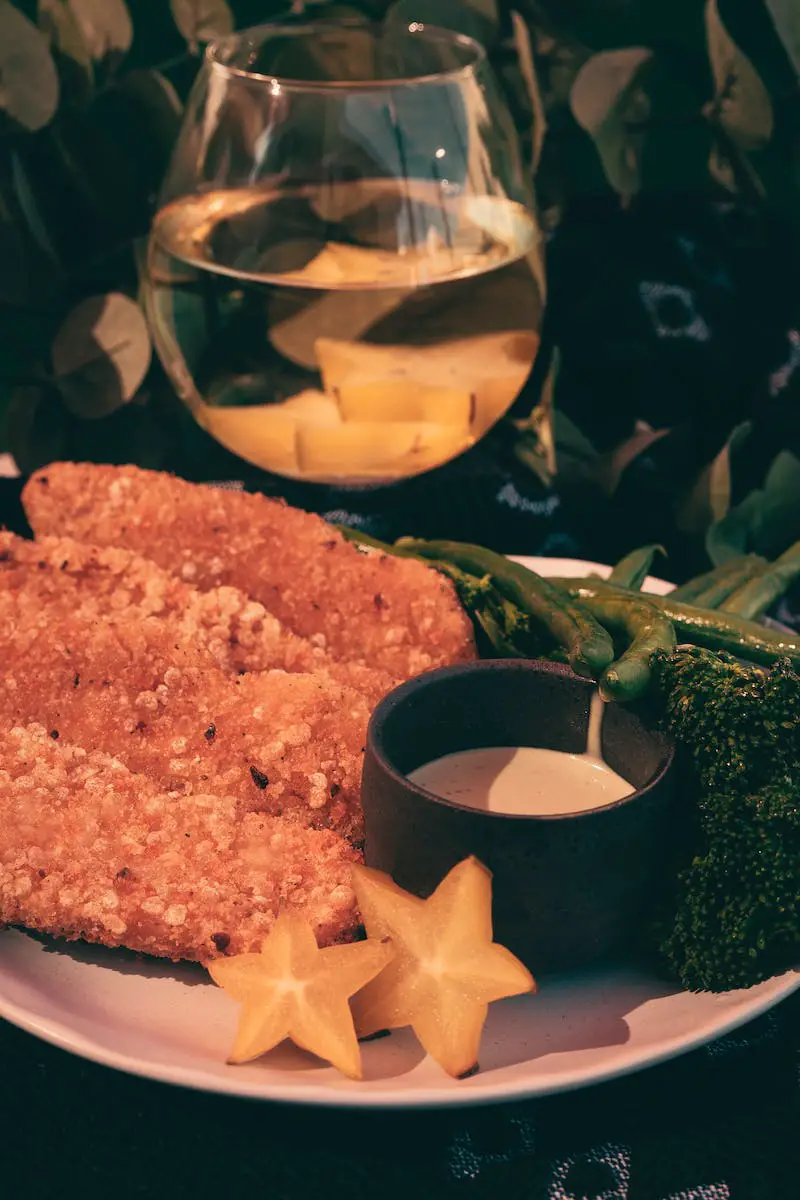
When it comes to making fried fish, the right ingredients can make all the difference. Here are some key ingredients to consider, as well as some substitutions you can make if you don’t have everything on hand.
Batter and Breading Options
The batter and breading are an essential part of the fried fish experience. Traditional Southern-style fried fish often uses a cornmeal-based breading, while other recipes may use a flour-based batter or a combination of both. You can also experiment with different types of flour, such as rice flour or chickpea flour, for a gluten-free option.
If you’re looking for a lighter option, you can try a beer batter or a tempura batter, which will give your fried fish a crispy, airy texture. For a healthier twist, you can use panko breadcrumbs or crushed nuts instead of traditional breading.
Seasoning Mixes
The right seasoning can take your fried fish from good to great. A classic Southern-style seasoning mix might include paprika, garlic powder, onion powder, and cayenne pepper. Other popular seasoning options include Old Bay seasoning, Cajun seasoning, and lemon pepper.
If you’re looking for a milder flavor, you can simply season your fish with salt and pepper. You can also experiment with different herbs and spices, such as parsley, thyme, or dill, to add a fresh, aromatic element to your fried fish.
Remember, the key to great fried fish is to use fresh, high-quality ingredients and to experiment with different flavors and textures until you find the perfect combination. With these ingredients and substitutions, you’ll be well on your way to making delicious fried fish at home.
Preparation Techniques
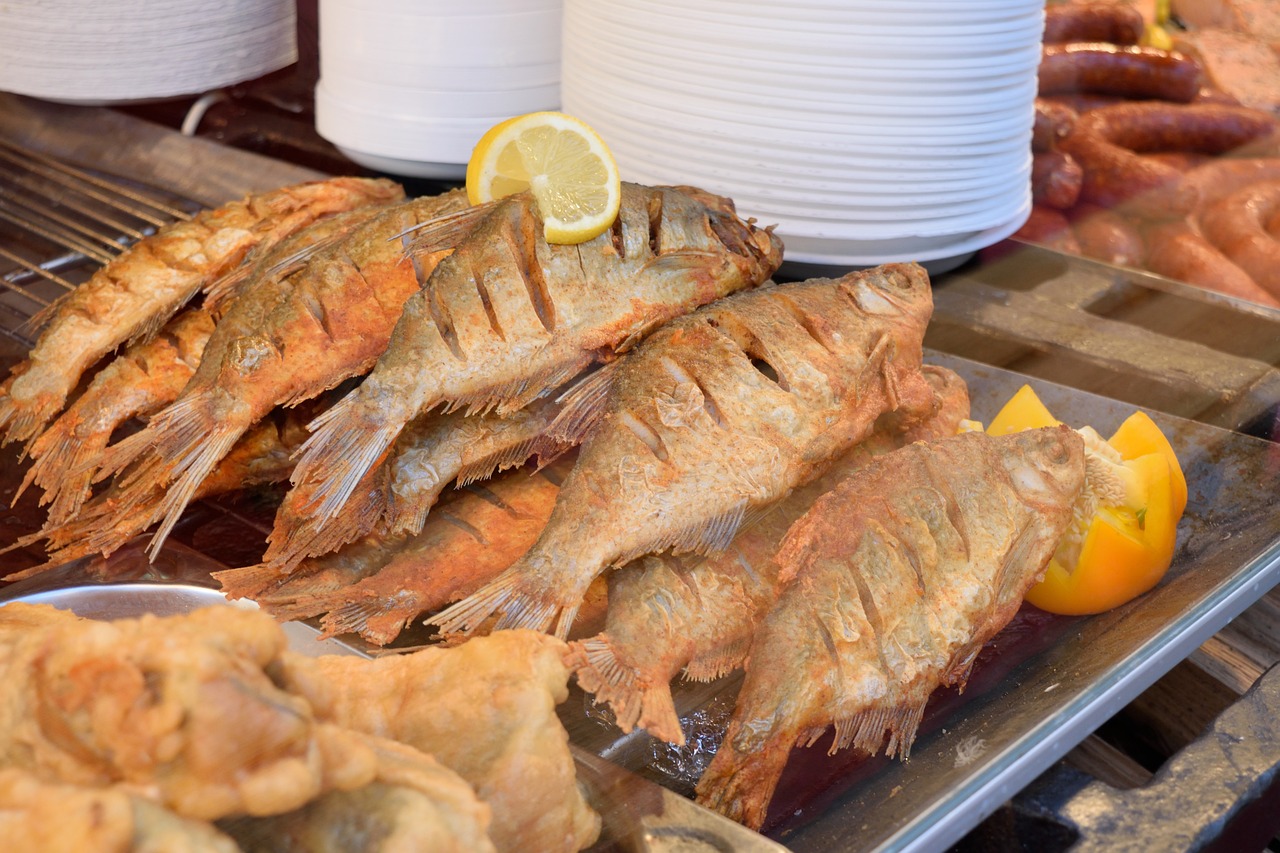
Before you can enjoy a delicious plate of fried fish, you need to prepare the fish properly. This section will cover some essential preparation techniques to ensure that your fried fish turns out perfectly.
Cleaning and Filleting
Cleaning and filleting the fish is the first step in preparing it for frying. If you’re using whole fish, you’ll need to remove the scales and gut the fish. You can do this yourself or ask your fishmonger to do it for you. Once the fish is cleaned, you’ll need to fillet it. Filleting a fish can be tricky, but with a little practice, you’ll get the hang of it. Make sure you have a sharp knife and a clean cutting board. Start by making a cut behind the gills and along the spine. Then, use the knife to separate the flesh from the bones. Repeat the process on the other side of the fish.
Marinating Tips
Marinating the fish before frying can add flavor and help keep the fish moist. There are many different marinades you can use, depending on your taste preferences. Some popular marinades include lemon and herb, garlic and ginger, and Cajun seasoning. To marinate the fish, place it in a shallow dish and pour the marinade over the top. Make sure the fish is fully coated in the marinade and let it sit in the refrigerator for at least 30 minutes. You can marinate the fish for up to 24 hours for maximum flavor.
When marinating fish, it’s important to use an acid-based marinade, such as lemon juice or vinegar. The acid will help to break down the proteins in the fish, making it more tender. However, be careful not to marinate the fish for too long, as the acid can start to cook the fish and make it tough.
In summary, cleaning and filleting the fish and marinating it are two crucial steps in preparing fried fish. By following these tips, you’ll be well on your way to enjoying a delicious plate of crispy, flavorful fried fish.
Frying Methods
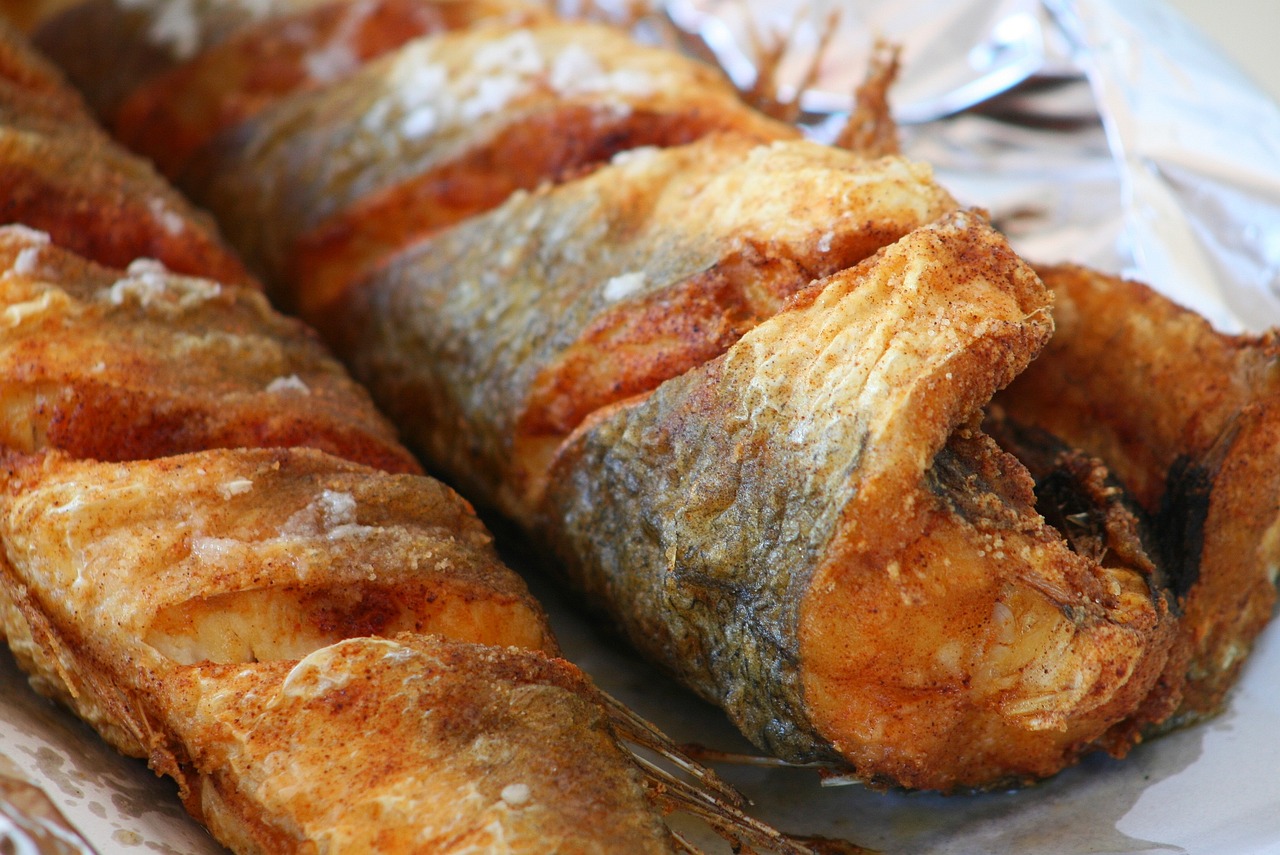
When it comes to frying fish, there are two primary methods: deep frying and pan frying. Both methods are relatively easy to do, and each has its own advantages and disadvantages.
Deep Frying Essentials
Deep frying involves submerging the fish in hot oil. This method is ideal for larger fish fillets or whole fish. To deep fry fish, you’ll need a deep fryer or a deep pot filled with oil. The oil should be heated to around 375°F.
Before frying, ensure that the fish is dry and seasoned with salt and pepper. You can also add other seasonings like garlic or paprika to the flour or batter.
To deep fry the fish, coat it in flour or batter and carefully lower it into the hot oil. Cook until the fish is golden brown and crispy, which usually takes around 2-4 minutes per side.
Deep frying is an effective method for achieving crispy, evenly cooked fish. However, it can also be messy and requires a lot of oil. It can also be less healthy than other cooking methods due to the amount of oil used.
Pan Frying Procedures
Pan frying is a more traditional method of frying fish. This method involves cooking the fish in a shallow pan with a small amount of oil. Pan frying is ideal for smaller fillets or portions of fish.
To pan fry fish, start by heating a small amount of oil in a non-stick pan. Once the oil is hot, add the fish fillets and cook for 2-3 minutes on each side, or until golden brown.
When pan frying, it’s important to use a non-stick pan to prevent the fish from sticking to the bottom. You can also use a small amount of butter or oil to help prevent sticking.
Pan frying is an excellent option for those who want to avoid using a lot of oil. It’s also a great way to achieve a crispy, golden brown crust on the fish. However, it can be more challenging to get the fish evenly cooked, and it may not be the best option for larger fish fillets.
Overall, both deep frying and pan frying are excellent methods for cooking fried fish. The method you choose will depend on your personal preferences and the type of fish you’re cooking. For larger fillets or whole fish, deep frying may be the best option. For smaller portions or a healthier option, pan frying is a great choice.
Cooking Equipment
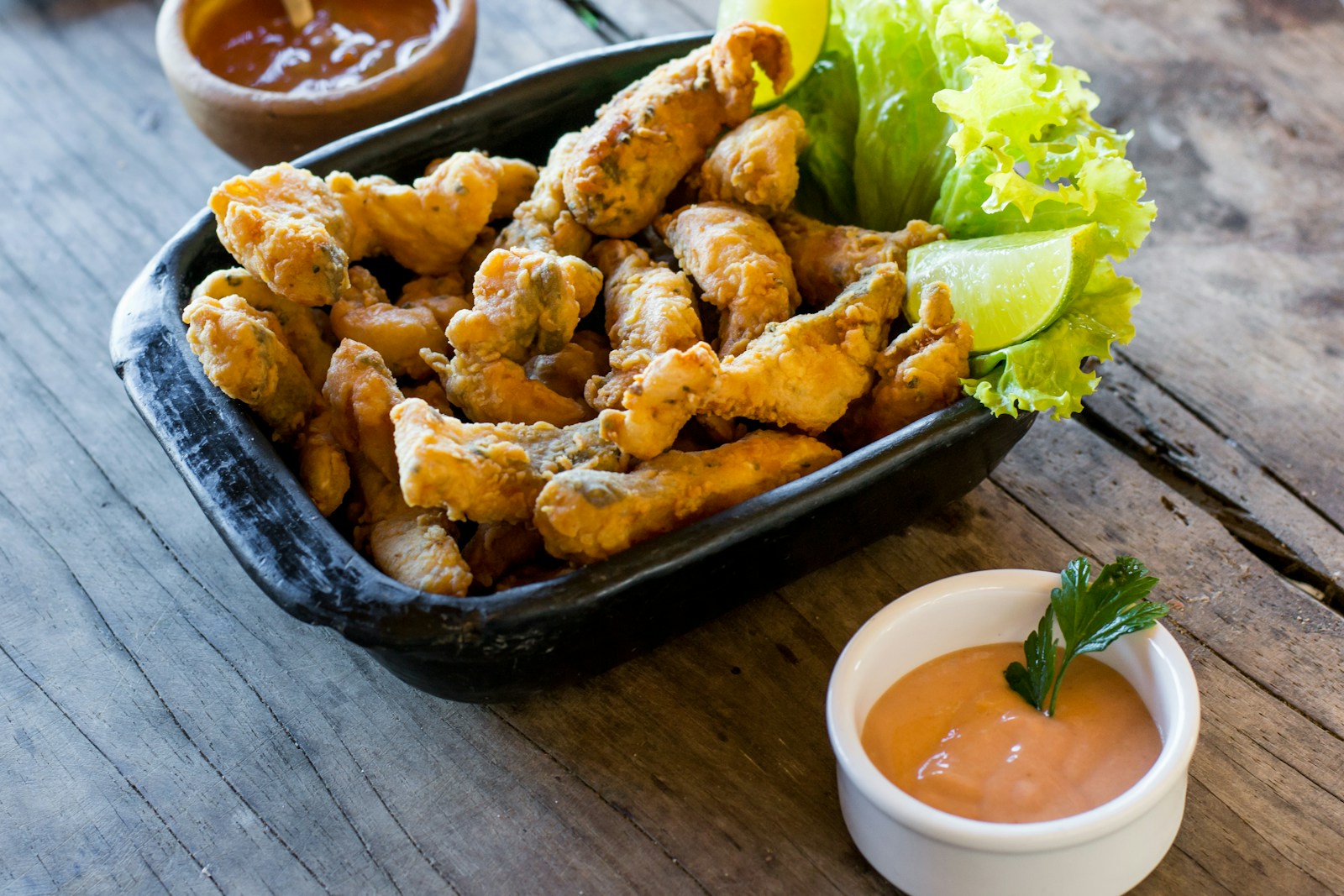
When it comes to frying fish, having the right equipment can make all the difference in achieving a crispy, golden-brown crust. In this section, we will discuss the tools you need to fry fish to perfection.
Choosing the Right Tools
The first thing you need is a heavy-bottomed frying pan or cast-iron skillet. These types of pans distribute heat evenly and hold their temperature well, making them ideal for frying fish. A 10-12 inch pan is suitable for frying 2-3 fillets at a time.
Next, you will need a deep-fry thermometer to ensure the oil reaches the correct temperature. The ideal temperature for frying fish is between 350-375°F. If the oil is too hot, the fish will cook too quickly on the outside and remain raw on the inside. If the oil is not hot enough, the fish will absorb too much oil and become greasy.
A slotted spatula or tongs are also essential for flipping and removing the fish from the hot oil. Using a slotted spatula or tongs will prevent the fish from breaking apart during the frying process.
Maintenance and Safety
It is important to maintain your cooking equipment to ensure it lasts for many years. After each use, clean your frying pan with warm water and a mild detergent. Avoid using abrasive sponges or steel wool, as they can scratch the surface of the pan.
When it comes to safety, always use caution when working with hot oil. Never leave the hot oil unattended and keep a fire extinguisher nearby. Always use a pan with a lid to smother any flames if they occur.
In conclusion, choosing the right cooking equipment is essential for frying fish to perfection. A heavy-bottomed frying pan or cast-iron skillet, a deep-fry thermometer, and a slotted spatula or tongs are the basic tools you need. Remember to maintain your equipment properly and practice safety precautions when working with hot oil.
Serving and Presentation
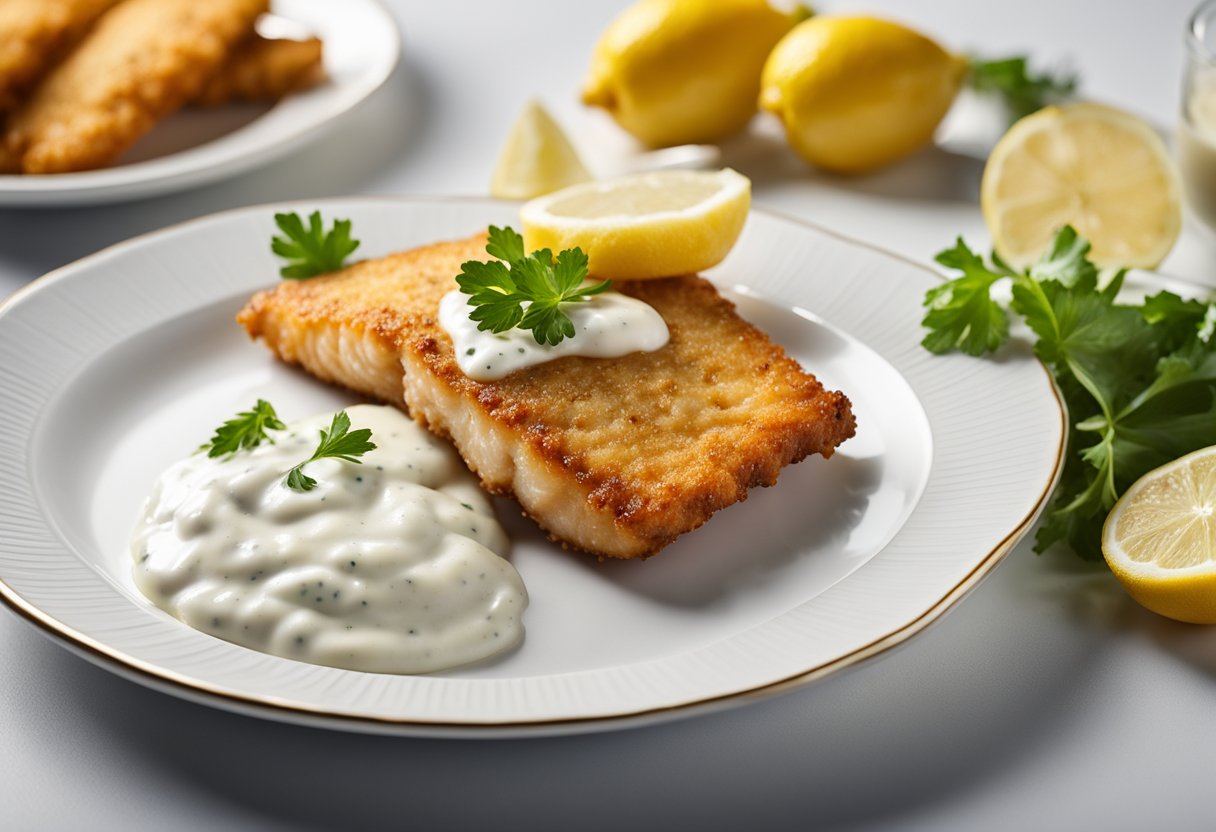
When it comes to serving and presenting fried fish, there are a few things to keep in mind that can help elevate your dish and make it look as good as it tastes. In this section, we’ll cover some plating techniques and accompaniments that can help you achieve a beautiful and delicious presentation.
Plating Techniques
Plating is an art that can take some practice to master, but with a few basic techniques, you can create a beautiful and visually appealing dish. Here are some tips to keep in mind when plating your fried fish:
- Use a white plate: A white plate provides a neutral background that allows the colors and textures of your dish to stand out. It also helps to create a sense of elegance and sophistication.
- Create height: Use garnishes or other elements to create height on your plate. This can help to add visual interest and make your dish look more appealing.
- Use negative space: Negative space is the area around your dish that is left empty. Use this space to your advantage by creating a sense of balance and harmony on your plate.
Accompaniments
Fried fish is delicious on its own, but serving it with the right accompaniments can take it to the next level. Here are some ideas to get you started:
- Tartar sauce: Tartar sauce is a classic accompaniment to fried fish. Its creamy, tangy flavor pairs perfectly with the crispy texture of the fish.
- Coleslaw: Coleslaw is another classic side dish that pairs well with fried fish. Its crunchy texture and tangy flavor provide a nice contrast to the rich, savory flavor of the fish.
- French fries: French fries are a popular side dish for a reason. Their crispy texture and salty flavor make them the perfect accompaniment to fried fish.
- Cornbread: Cornbread is a Southern classic that pairs well with fried fish. Its slightly sweet flavor and crumbly texture provide a nice contrast to the crispy texture of the fish.
By using these plating techniques and accompaniments, you can create a beautiful and delicious dish that is sure to impress your guests.
Nutritional Information
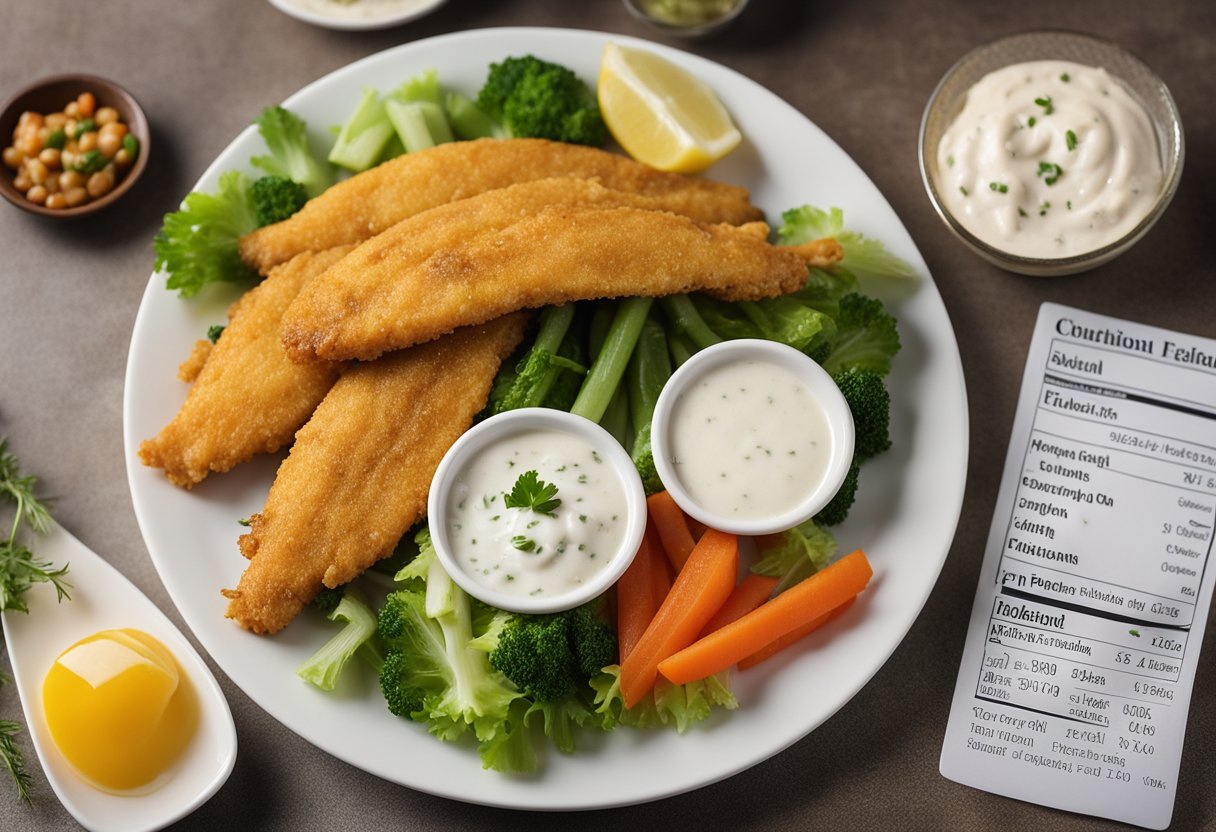
If you enjoy fried fish, it’s essential to know its nutritional information to make informed dietary choices. Fried fish is a good source of protein, omega-3 fatty acids, and other essential nutrients. However, it can also be high in calories, fat, and sodium, depending on the type of fish and the method of preparation.
Here is the nutritional information of fried fish per 3-ounce fillet:
- Calories: 211
- Total fat: 11g
- Saturated fat: 2.5g
- Carbohydrates: 15g
- Protein: 13g
- Fiber: 0.5g
- Sodium: 484mg
- Cholesterol: 31mg
As you can see, fried fish is relatively high in calories and fat. However, it is also a good source of protein, which is essential for muscle growth and repair. Omega-3 fatty acids are also present in fried fish, which are beneficial for heart health.
It’s important to note that the nutritional information of fried fish can vary based on the type of fish and the method of preparation. For example, fish that is breaded and deep-fried may have more calories and fat than fish that is grilled or baked. Additionally, the nutritional content of fried fish can be affected by the type of oil used for frying.
To make fried fish a healthier option, consider using a lighter breading, such as whole-wheat breadcrumbs, and frying the fish in a heart-healthy oil, such as olive oil. You can also try grilling or baking the fish for a lower calorie and fat option.
Overall, fried fish can be a nutritious part of your diet when consumed in moderation and prepared in a healthy way.
Health Considerations
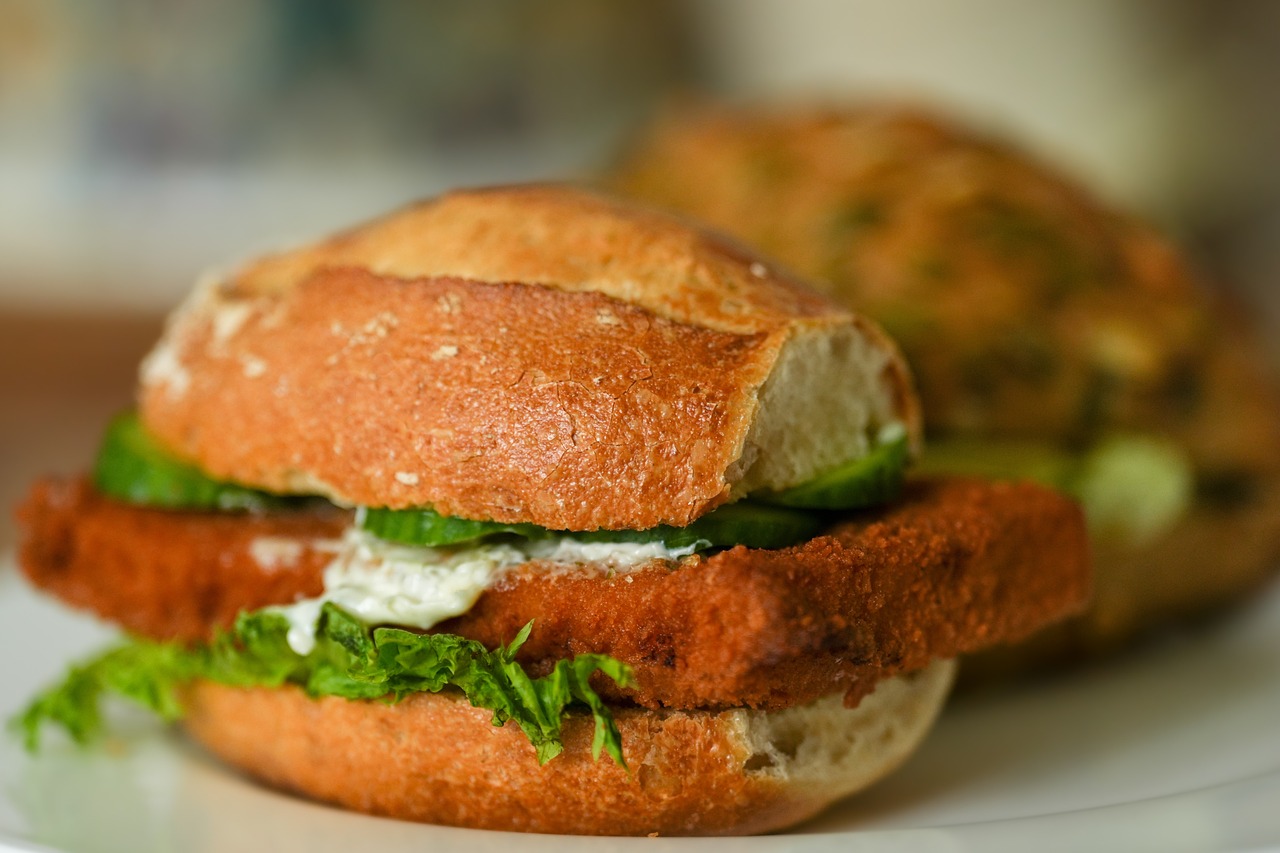
When it comes to fried fish, there are a few health considerations to keep in mind. Here are a couple of things to keep in mind before you indulge:
Allergies and Intolerances
If you have a seafood allergy or intolerance, you should avoid fried fish altogether. Some people can experience severe reactions, such as anaphylaxis, from even the smallest amount of seafood. If you’re not sure whether you have a seafood allergy or intolerance, talk to your doctor.
Healthy Cooking Alternatives
Fried fish can be high in calories and fat, which can contribute to weight gain and other health problems. However, there are healthy cooking alternatives that you can try. Here are a few to consider:
- Baked Fish: Baking fish is a healthy alternative to frying. You can add some herbs and spices for flavor, and it’s a great way to get your omega-3s without all the added fat.
- Grilled Fish: Grilling fish is another healthy option. You can use a marinade to add flavor, and it’s a great way to get that smoky flavor without all the added fat.
- Poached Fish: Poaching fish is a great way to keep it moist and tender. You can add some lemon and herbs for flavor, and it’s a great way to get your omega-3s without all the added fat.
By choosing healthy cooking alternatives, you can enjoy the benefits of fish without all the added calories and fat that come with frying.
Storage and Reheating
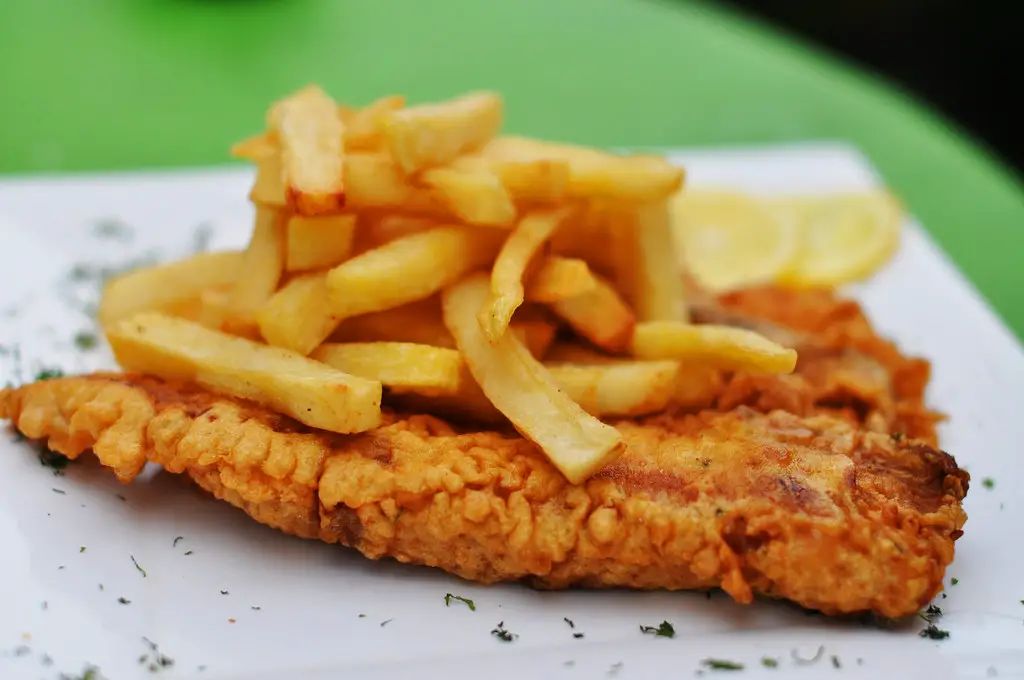
When it comes to fried fish, proper storage and reheating methods are crucial to maintain its texture, flavor, and overall quality. In this section, we will discuss the best practices for storing and reheating fried fish.
Proper Storage Methods
To ensure the longevity of your fried fish, it is essential to store it properly. Here are some tips to help you store your fried fish:
- Allow the fried fish to cool down completely before storing it. Putting hot or even warm fish in a container can create condensation that will dampen your fish’s crispy coating. Once this coating takes on too much moisture, there will be no salvaging the crispness it once had.
- Store the fried fish in an airtight container lined with paper towels to absorb any excess moisture. This will help keep the fish crispy and prevent it from becoming soggy.
- Store the container in the refrigerator if you plan on consuming the fish leftovers within 2-3 days. If you do not plan on consuming the fish within this timeframe, it is best to freeze it.
- If you plan on freezing the fish, wrap it tightly in plastic wrap or aluminum foil and place it in a freezer-safe container. This will help prevent freezer burn and maintain the quality of the fish.
Best Reheating Practices
Reheating fried fish can be tricky, as you want to maintain its crispy texture without overcooking it. Here are some tips to help you reheat your fried fish:
- The best way to reheat fried fish is in the oven. Preheat the oven to 275 F. Wrap the fish in aluminum foil and place it on a baking sheet. Bake for 15-20 minutes or until the fish is heated through.
- You can also reheat fried fish in a skillet. Heat a small amount of oil in a skillet over medium-high heat. Once the oil is hot, add the fish and cook for 2-3 minutes on each side or until heated through.
- Avoid reheating fried fish in the microwave, as this can make it soggy and rubbery.
By following these storage and reheating tips, you can enjoy your fried fish leftovers without compromising its quality.
Recipes and Variations
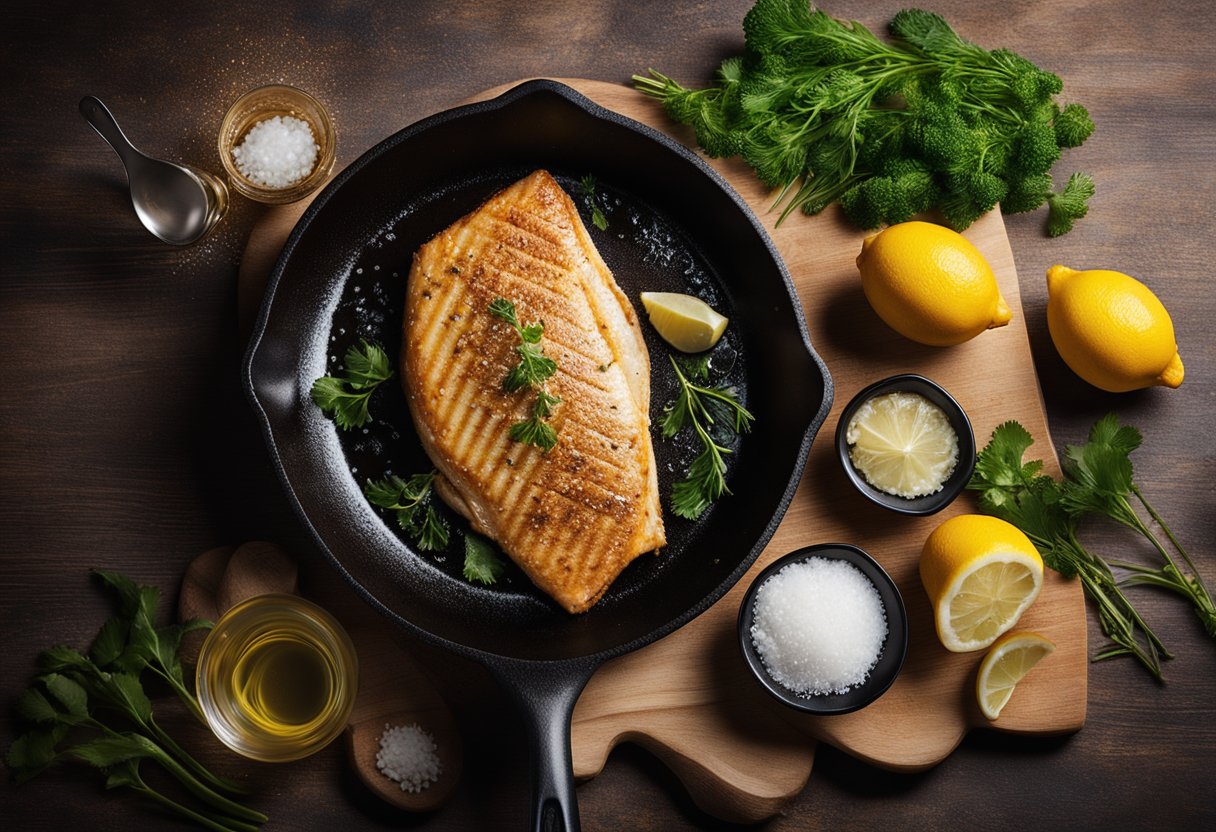
Fried fish is a classic dish that can be made in many different ways. Here are some recipes and variations that you can try to make your fried fish even more delicious.
Basic Fried Fish Recipe
To make basic fried fish, you will need:
- Fish fillets (such as cod, tilapia, or catfish)
- Flour
- Salt
- Pepper
- Oil (such as vegetable or canola oil)
- Start by seasoning the fish fillets with salt and pepper on both sides.
- Coat each fillet in flour, shaking off any excess.
- Heat the oil in a frying pan over medium-high heat.
- Add the fish fillets to the pan and cook for 2-3 minutes on each side, or until golden brown and cooked through.
- Remove the fish from the pan and place on a paper towel to drain any excess oil.
Variations
Cornmeal Coating
For a crunchy, flavorful coating, try using cornmeal instead of flour. Mix together cornmeal, salt, and pepper, and coat the fish fillets in the mixture before frying.
Buttermilk Marinade
Marinating the fish in buttermilk before frying can help to tenderize the fish and add extra flavor. Simply soak the fish fillets in buttermilk for 30 minutes before coating in flour and frying.
Spicy Seasoning
If you like your fried fish with a little kick, try adding some spice to the coating. Mix together flour, paprika, cayenne pepper, garlic powder, and onion powder, and use this mixture to coat the fish fillets before frying.
Beer Batter
For a light, crispy coating, try making a beer batter. Mix together flour, salt, pepper, and beer to make a batter, and dip the fish fillets in the mixture before frying.
External Links
Here are some additional resources for fried fish recipes and variations:
- 10 Best Fish Fry Recipes
- Fried Fish Recipes to Make When You Want Something Crispy
- Crispy Pan Fried Fish Recipe
- Easy Southern Fried Fish
Frequently Asked Questions
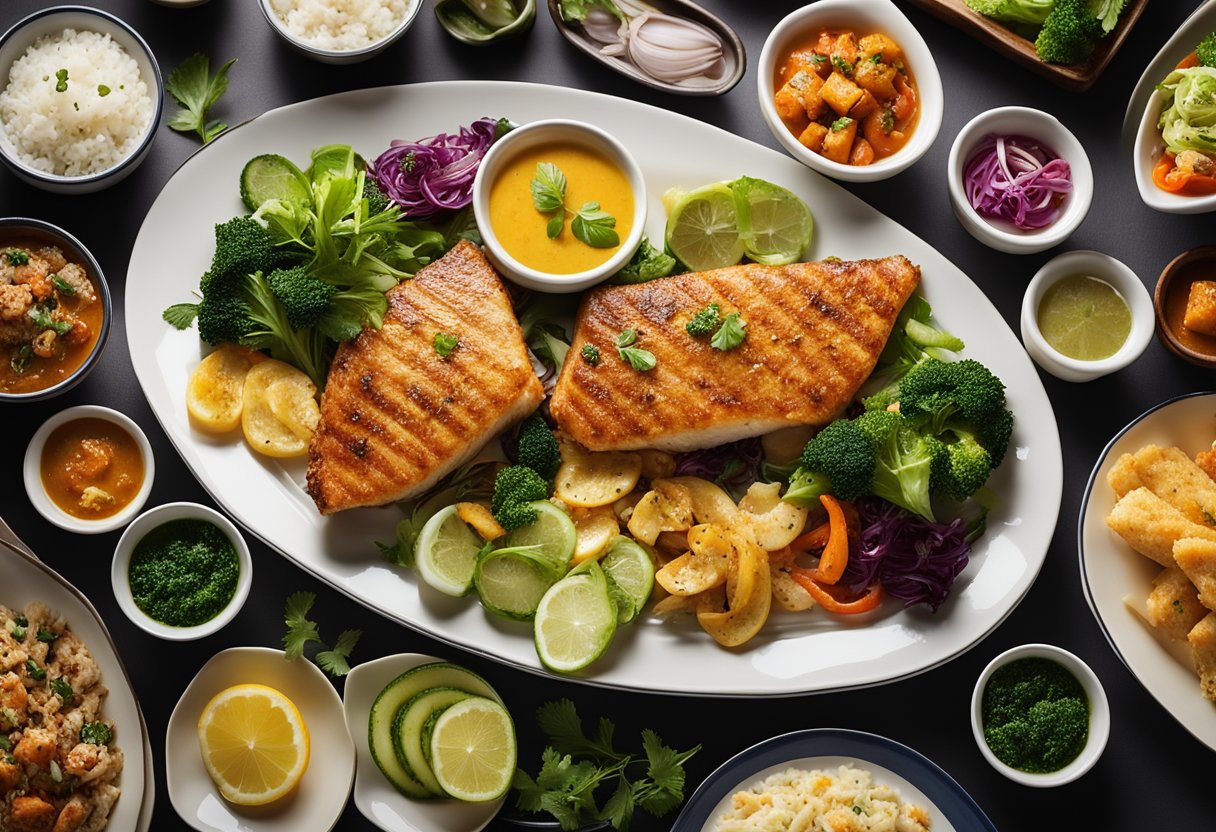
What type of oil should be used for frying fish to achieve the best flavor and texture?
To achieve the best flavor and texture, it is recommended to use oils with a high smoke point such as canola oil, peanut oil, or vegetable oil. These oils can withstand the high temperature needed for frying without breaking down and imparting a burnt taste to the fish.
How can one ensure the batter remains on the fish during the frying process?
To ensure the batter remains on the fish during the frying process, it is important to make sure the fish is dry before coating it with the batter. Additionally, using a batter that is not too thin and not too thick can help the batter adhere to the fish better. Lastly, avoid overcrowding the pan when frying the fish to prevent the batter from falling off.
What are the steps to creating a crispy batter for fried fish?
To create a crispy batter for fried fish, start by mixing flour, cornstarch, baking powder, and seasoning in a bowl. Gradually add in cold water until the batter is smooth and free of lumps. Dip the fish into the batter and make sure it is fully coated before frying it in hot oil until golden brown.
Which fish varieties are considered optimal for frying due to their flavor and texture?
Fish varieties that are optimal for frying due to their flavor and texture include cod, haddock, catfish, and tilapia. These types of fish have a mild flavor and firm texture that hold up well during the frying process.
Can you provide a traditional Southern fried fish recipe?
Sure! Here is a traditional Southern fried fish recipe:
Ingredients:
- 1 lb. fish fillets
- 1 cup all-purpose flour
- 1 tsp. salt
- 1 tsp. black pepper
- 1 tsp. garlic powder
- 1 tsp. paprika
- 1 cup buttermilk
- Vegetable oil for frying
Instructions:
- In a bowl, mix together the flour, salt, black pepper, garlic powder, and paprika.
- In another bowl, pour the buttermilk.
- Dip each fish fillet into the buttermilk and then coat it thoroughly with the flour mixture.
- Heat the vegetable oil in a frying pan over medium-high heat.
- Once the oil is hot, add the fish fillets and cook for about 4-5 minutes on each side or until golden brown.
- Remove the fish from the pan and place on a paper towel to remove any excess oil.
How long should fish be fried to ensure it is fully cooked but still moist inside?
The cooking time for fried fish varies depending on the thickness of the fillets. As a general rule, fish should be fried for 3-5 minutes on each side or until it is golden brown and the internal temperature reaches 145°F. It is important to not overcook the fish to ensure it remains moist inside.
External Links
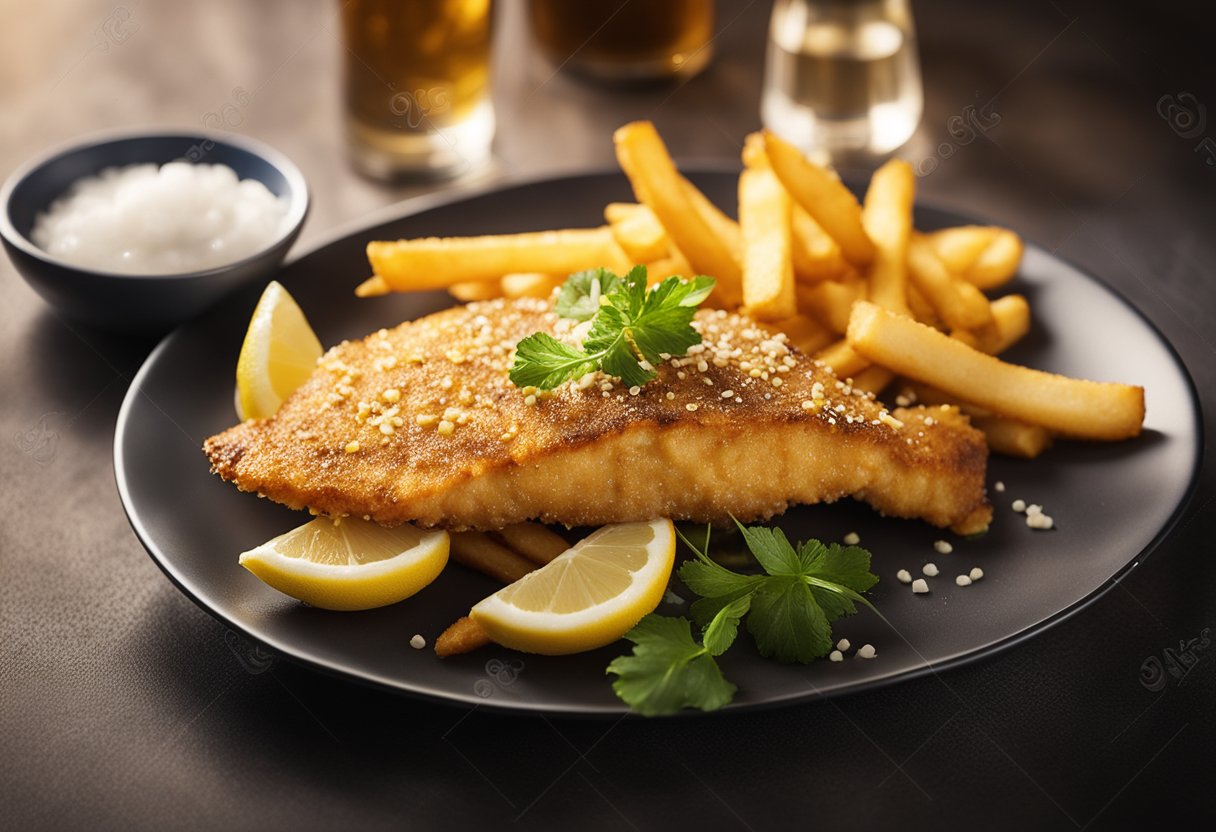
If you want to learn more about fried fish, there are plenty of external resources available online. Below are some links that you may find helpful:
- The Spruce Eats: The Spruce Eats is a great resource for home cooks, and they have a wide variety of fried fish recipes available on their website. They also offer tips and tricks for getting the perfect crispy crust on your fish.
- Serious Eats: Serious Eats is another great resource for foodies, and they have a section dedicated to fried fish recipes. They offer detailed instructions and photos to help you get the perfect result.
- Allrecipes: Allrecipes is a popular website for home cooks, and they have a large collection of fried fish recipes. You can sort the recipes by rating, popularity, or even dietary restrictions.
- Food Network: Food Network is a well-known resource for foodies, and they have a collection of fried fish recipes from top chefs. They also offer tips and tricks for getting the perfect crispy crust.
- Epicurious: Epicurious is a great resource for foodies, and they have a collection of crispy fried fish recipes. They offer step-by-step instructions and photos to help you get the perfect result.
These external links are just a few of the many resources available online for learning how to make fried fish. Whether you’re a beginner or an experienced cook, there’s always something new to learn.
More FAQs
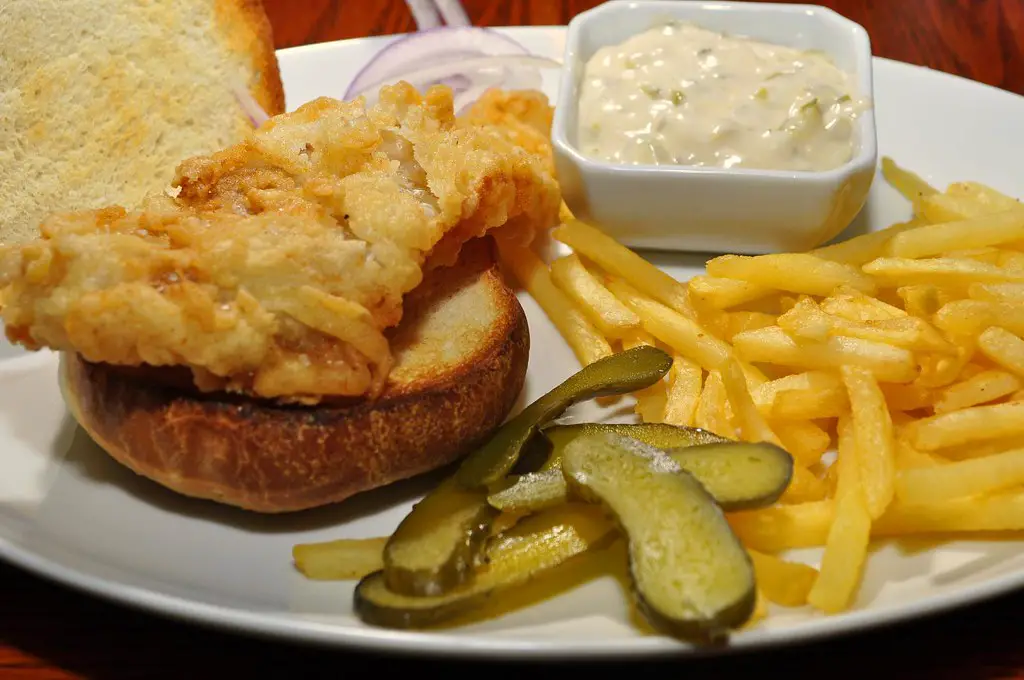
What fish is best for frying?
When it comes to frying fish, it is best to choose mild-flavored, white-fleshed fish such as sea bass, flounder, cod, haddock, pollock, tautog, or scup. For freshwater fish, you can use white perch, yellow perch, or walleye. It is best to avoid frying oily fish like bluefish, trout, salmon, or tuna as they tend to fall apart during frying.
What goes well with fried fish?
Fried fish pairs well with a variety of side dishes such as french fries, coleslaw, potato salad, hush puppies, baked beans, or cornbread. You can also serve it with tartar sauce, lemon wedges, or hot sauce for added flavor.
Why do people fry fish?
Frying fish is a popular cooking method because it results in a crispy, golden-brown exterior and a tender, juicy interior. It is also a quick and easy way to cook fish, making it a great option for busy weeknights.
Can fried fish be healthy?
While fried fish is delicious, it is not the healthiest option. However, there are ways to make it healthier. For instance, you can use a healthier oil such as olive oil or avocado oil instead of vegetable oil. You can also use whole-wheat flour or cornmeal instead of white flour for the coating. Additionally, you can bake or grill the fish instead of frying it to reduce the amount of oil used.
Conclusion
Fried fish is a popular dish enjoyed by many around the world. The crispy texture and savory flavor make it a satisfying choice for seafood lovers.
Whether it’s served with a side of chips or a fresh salad, fried fish is a versatile and delicious option for a meal. However, it’s important to consume fried foods in moderation as part of a balanced diet.
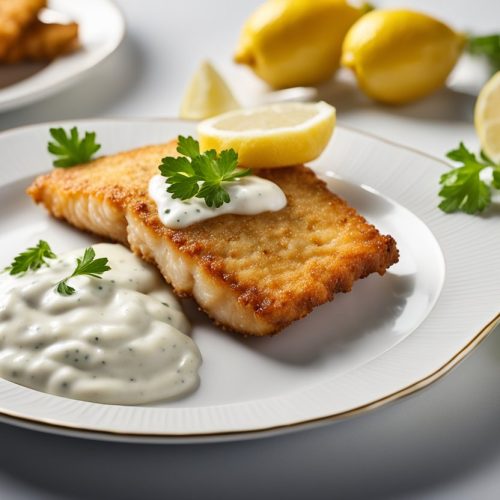
Crispy Pan-Fried Fish
Ingredients
- 4 fillets of white fish (such as tilapia or cod)
- 1 cup all-purpose flour
- 1 teaspoon garlic powder
- 1 teaspoon onion powder
- 1 teaspoon paprika
- Salt and pepper to taste
- 2 eggs, beaten
- 1 cup breadcrumbs
- Vegetable oil for frying
- Lemon wedges for serving
Instructions
- In a shallow bowl, mix flour, garlic powder, onion powder, paprika, salt, and pepper.
- Dredge each fish fillet in the flour mixture, ensuring an even coating.
- Shake off any excess flour.
- Dip the floured fillets into the beaten eggs, coating them completely.
- Press the fillets into the breadcrumbs, making sure they are well-coated on both sides.
- Heat vegetable oil in a pan over medium-high heat.
- Carefully place the coated fish fillets into the hot oil and fry for 3-4 minutes per side, or until golden brown and crispy.
- Remove the fried fish from the pan and place them on a paper towel-lined plate to absorb any excess oil.
- Serve hot with lemon wedges.

